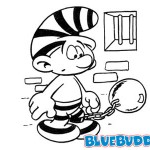Sep 2nd, 2008 by Frank LaBanca, Ed.D.
 Tomorrow, I will begin to teach a doctoral course in statistics. I am excited about the prospect of working with highly motivated, engaged teachers. What concerns me most is the “fright factor” that some have. To me, statistics has always been a tool to help explain whether or not a phenomenon, a teaching strategy, or perhaps student learning changes due to influencing factors.
Tomorrow, I will begin to teach a doctoral course in statistics. I am excited about the prospect of working with highly motivated, engaged teachers. What concerns me most is the “fright factor” that some have. To me, statistics has always been a tool to help explain whether or not a phenomenon, a teaching strategy, or perhaps student learning changes due to influencing factors.
That said, I think of statistics as an applied tool. Statistics don’t exist in isolation. They exist IN CONTEXT. The challenge for me will be to translate some technical mumbo-jumbo into meaningful concepts that these teachers can realistically apply to their research or even to their understandings of their own students.
When I learned statistics, I was working in a bacterial genetics laboratory examining DNA restriction fragments of human chromosome 6, locus HLA-C (major histocompatibility complex of the immune system). I needed to determine the significance of different fragment lengths to see if our human genome project mapping strategy was working. Now, realistically, I know that most won’t even understand the nature of this genetics project, and that doesn’t matter. The fact was, that I needed to use statistics to explain what I had done experimentally. My data was IN CONTEXT for me. That being said, statistics for educators need to be in context for them. It’s not just good enough to examine fictitious educational data, we also need to consider meaningful data to the student-constituents.
My colleague and good friend, Krista Ritchie sent me some interesting literature recently and one
paper caught my eye:
Singer, J. D., & Willett, J. B. (1990). Improving the teaching of applied statistics: Putting the data back into data analysis. The American Statistician, 44(3), 223-230. (Argues against artificial data sets for learning statistics – that false data makes statistics seem dry and dull. Argues for learning statistics through authentic research).
 I had the opportunity to present to this group of students earlier this summer, talking about 21st-century skills and their application in the classroom. I guess now it’s my turn to put up and show that authentic teaching and learning can be a reality. I will attempt to use this blog as a point of reflexivity for both me and my students, I’ve established a collaborative wiki for us to share ideas, and I will attempt to get an online survey working as well. I thought this would be done before writing, but alas, I am having technical difficulties with the limesurvey freeware. If I can’t get it to work by tomorrow’s class, I will resort to paper (maybe bubblesheets from Apperson?). I think the online survey will be valuable to my students, not only as an expository activity, but as a potential tool for their dissertations.
I had the opportunity to present to this group of students earlier this summer, talking about 21st-century skills and their application in the classroom. I guess now it’s my turn to put up and show that authentic teaching and learning can be a reality. I will attempt to use this blog as a point of reflexivity for both me and my students, I’ve established a collaborative wiki for us to share ideas, and I will attempt to get an online survey working as well. I thought this would be done before writing, but alas, I am having technical difficulties with the limesurvey freeware. If I can’t get it to work by tomorrow’s class, I will resort to paper (maybe bubblesheets from Apperson?). I think the online survey will be valuable to my students, not only as an expository activity, but as a potential tool for their dissertations.
 Challenges await for both the students and me. As Marcy says, “I take no prisoners.”
Challenges await for both the students and me. As Marcy says, “I take no prisoners.”